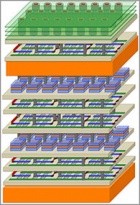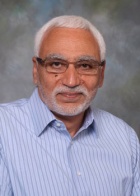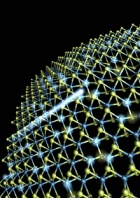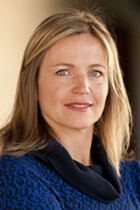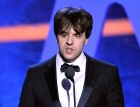All News
Stanford-led skyscraper-style chip design could boost electronic performance by factor of a thousand
Wednesday, December 9, 2015
In modern computer systems, processor and memory chips are laid out like single-story structures in a suburb. But suburban layouts waste time and energy. A new skyscraper-like design, based on materials more advanced than silicon, provides the next computing platform.
New Stanford research reveals the secrets of stishovites, a rare form of crystallized sand
Tuesday, December 8, 2015
Lasers are nothing like meteor strikes, but in the nanosecond when each strike silicon dioxide, the main ingredient in coastal sand, stishovites form. Understanding how this rare crystal form will help improve laser technology and allow Earth scientists to better understand meteor impacts.
Stanford engineers invent process to accelerate protein evolution
Monday, December 7, 2015
A new tool enables researchers to test millions of mutated proteins in a matter of hours or days, speeding the search for new medicines, industrial enzymes and biosensors.
Electrical Engineering Chair Abbas El Gamal receives 2016 IEEE Richard W. Hamming Medal
Thursday, December 3, 2015
El Gamal is noted for contributions to network multi-user information theory and for impact on programmable circuit architectures
Stanford engineers among recipients of Precourt Institute and TomKat Center $2.1 million grants
Thursday, December 3, 2015
Grants will fund groundbreaking energy research
Stanford engineers develop 'invisible wires' that could improve solar cell efficiency
Thursday, December 3, 2015
Stanford engineers have discovered how to make the electrical wiring on top of solar cells nearly invisible to incoming light. The new design, which uses silicon nanopillars to hide the wires, could dramatically boost solar-cell efficiency.
Plasma experiments bring astrophysics down to Earth
Tuesday, December 1, 2015
New laboratory technique allows researchers to replicate on a tiny scale the swirling clouds of ionized gases that power the sun, to further our understanding of fusion energy, solar flares and other cosmic phenomena.
Stanford researcher suggests storing solar energy underground for a cloudy day
Tuesday, November 24, 2015
A common criticism of a total transition to wind, water and solar power is that the U.S. electrical grid can't affordably store enough standby electricity to keep the system stable. Stanford researcher Mark Z. Jacobson proposes an underground solution to that problem.
Atom-sized craters make a catalyst much more active
Tuesday, November 24, 2015
SLAC, Stanford Engineering discovery could speed important chemical reactions, such as making hydrogen fuel
Stanford students put computer science skills to social good
Thursday, November 19, 2015
Four undergraduates have co-founded CS+Social Good, an organization that utilizes technology to make a positive social impact.
Stanford designs underwater solar cells that turn captured greenhouse gases into fuel
Wednesday, November 18, 2015
Taking a cue from plants, researchers figure out how to use the sun's energy to combine CO2 with H2O to create benign chemical products, as part of a futuristic technology called artificial photosynthesis.
Tough enough: Stanford and IBM test the limits of toughness in nanocomposites
Monday, November 16, 2015
By slipping springy polystyrene molecules between layers of tough yet brittle composites, researchers made materials stronger and more flexible, in the process demonstrating the theoretical limits of how far this toughening technique could go.
Needed: More women in data science
Thursday, November 12, 2015
A recent gathering at Stanford on the emerging science of big data turned the usual gender ratio of science conferences on its head.
New 'tricorder' technology might be able to 'hear' tumors growing
Monday, November 9, 2015
A new technology has promise to safely find buried plastic explosives and maybe even spot fast-growing tumors. The technique involves the clever interplay of microwaves and ultrasound to develop a detector like the Star Trek tricorder.
Bioengineering Professor Karl Deisseroth awarded $3 million Breakthrough Prize for work in optogenetics
Sunday, November 8, 2015
Three Stanford professors honored by Breakthrough Prize Foundation
Stanford graduate students named Siebel Scholars
Thursday, November 5, 2015
Fifteen Stanford graduate students in business, computer science and bioengineering were recently named 2016 Siebel Scholars for outstanding academic performance and leadership in their fields.
Stanford engineers help discover the surprising trick jellyfish use to swim
Tuesday, November 3, 2015
A Stanford-led team shows how these ancient creatures' undulating motions cause water to pull them along. This counterintuitive insight could spur new designs for energy-efficient underwater craft.
Stanford team places 6th in Bridgestone World Solar Challenge
Tuesday, October 27, 2015
Arctan, a solar-powered car built by undergraduate members of the Stanford Solar Car Project, placed sixth in the 2015 Bridgestone World Solar Challenge, a nearly 2,000-mile race across the Australian outback.
Graphene key to high-density, energy-efficient memory chips, Stanford engineers say
Friday, October 23, 2015
Only an atom thick, graphene is a key ingredient in three Stanford projects to create data storage technologies that use nanomaterials other than standard silicon.
New Bioengineering Major culminated department’s evolution
Thursday, October 22, 2015
Stanford has added a permanent undergraduate training program to this new field “at the interface of life sciences and engineering.”
Introducing MARTY, Stanford's self-driving, electric, drifting DeLorean
Wednesday, October 21, 2015
Stanford engineers built an autonomous DeLorean capable of stable, precise drifting at large angles in order to study how cars perform in extreme situations, which could ultimately guide the development of autonomous safety protocols.
Microfluidic pioneer Stephen Quake receives award in biotechnology and medicine
Tuesday, October 20, 2015
Brandeis University bestows the Jacob Heskel Gabbay Award in Biotechnology and Medicine on the Stanford bioengineer whose analyses using microscopic amounts of fluids are providing new medical insights.
Sustainable engineering in the 21st Century
Tuesday, October 20, 2015
New interdisciplinary major prepares Stanford engineers to build sustainable urban, coastal and freshwater systems
Stanford engineers create artificial skin that can send pressure sensation to brain cell
Thursday, October 15, 2015
Stanford engineers have created a plastic skin-like material that can detect pressure and deliver a Morse code-like signal directly to a living brain cell. The work takes a big step toward adding a sense of touch to prosthetic limbs.
Seven scientists awarded grants for high-risk, high-return research
Wednesday, October 7, 2015
The awards are designed to encourage scientists to pursue creative research projects with the potential of leading to big improvements in health care.
